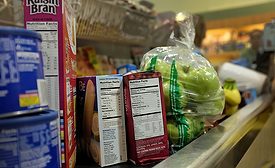Articles by Grant Gerke
CASE STUDY
The combination of advanced imaging, robotics and flexible, end-of-arm grippers allows an Israel-based food producer to automate pick-and-place operations for irregularly shaped foods.
Read More
CASE STUDY
Flexible Packaging Flexes its Muscles with Recycling Pilot
A single-stream mechanical recycling pilot demonstration produces the rFlex bale, a flexible packaging byproduct that could be used for future end markets and as a possible feedstock.
September 18, 2023
CASE STUDY
New Grinding Equipment and Automation Continue Optimization for FPL Food
FPL Food LLC is a major beef producer in the southeast and is adding new equipment to meet its next stage of growth.
August 31, 2023
Workforce Trends
Evolving Plant Floor Technology Reshuffles Operator Skills
New technology coming to the plant floor, such as augmented reality and artificial intelligence, is making an impact on operator roles in 2023
July 25, 2023
With 2025 Packaging Goals in Danger, Industry Targets Food Waste
Food processors and manufacturers may see opportunities with food waste reduction efforts to help support overall GHG efforts.
June 21, 2023
Garofalo Pasta Addresses Consumer Concerns with Mono-Material Packaging
Food producers are working with packaging makers to create flexible packaging options that meet existing and proposed EPR regulations.
June 20, 2023
How to Launch a Risk Assessment Team for Pet Food Operations
As manufacturers look to increase spending on pet food-related projects, so too must they look to increase their focus on safety.
June 19, 2023
Food Giant 'Expedites' Quality Control Upgrade
New labeling equipment and connecting to its SCADA platform add critical data monitoring to packaging lines, avoiding recalls and reputational harm.
June 14, 2023
Cyber Insurance Drives Increased Security
Food companies and manufacturers are meeting stringent security audits to qualify for cyber insurance policies.
April 19, 2023
Robot and Cobot Technology Transform Food Operations
Large- and medium-sized food companies are struggling to find workers and this trend is not going away. So food manufactures are turning to robot/cobot applications to solve new and old problems on the plant floor, while increasing productivity in the post-covid workforce.
April 17, 2023
Elevate your expertise in food engineering with unparalleled insights and connections.
Get the latest industry updates tailored your way.
JOIN TODAY!Copyright ©2024. All Rights Reserved BNP Media.
Design, CMS, Hosting & Web Development :: ePublishing









